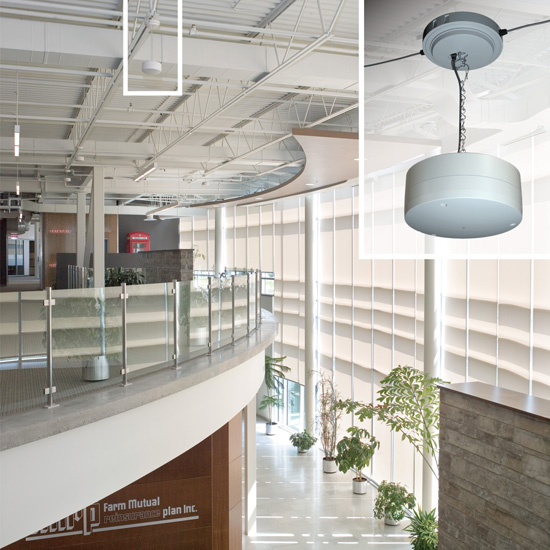Sound Masking 101
Learning Objectives:
- Differentiate between sound masking, white noise, and pink noise.
- Identify the three main types of masking architecture: centralized, decentralized, networked.
- Demonstrate the importance of achieving spatial uniformity in the masking sound in order to improve occupant comfort and productivity.
- Evaluate a specification for sound masking technology.
Credits:
Sound masking systems are a common component of today’s interiors, from their original use in commercial offices to relatively newer applications such as patient rooms in hospitals.
This technology uses loudspeakers to distribute an engineered background sound throughout a facility, raising its ambient level in a controlled fashion. The new level obscures noises that are lower in volume and reduces the disruptive impact of those that are higher by minimizing the degree of change perceived by listeners. Similarly, conversations are either entirely covered up or their intelligibility is reduced, improving speech privacy and decreasing the number of disruptions to occupants’ concentration.
Most people have experienced this type of effect—for example, when washing dishes at the kitchen sink while trying to talk to someone in the next room. The listener can tell the other person is speaking, but it is difficult to understand exactly what is being said because the running water has raised the ambient level in their area. In fact, everyday examples are virtually endless: the drone of an airplane engine, the murmur of a crowd in a busy restaurant, or even the rustling of leaves in the wind. They all have the potential to mask sounds the listener would otherwise hear.
Of course, when introducing a sound to a workplace or a healthcare facility, it is vital to ensure that it is as comfortable and unobtrusive as possible. Otherwise, it risks becoming a source of irritation and rather than helping to solve an acoustic problem, it becomes one itself—as was the case with the original masking systems developed in the late 1960s, which used white noise generators.

Photo courtesy of K.R. Moeller Associates Ltd.









